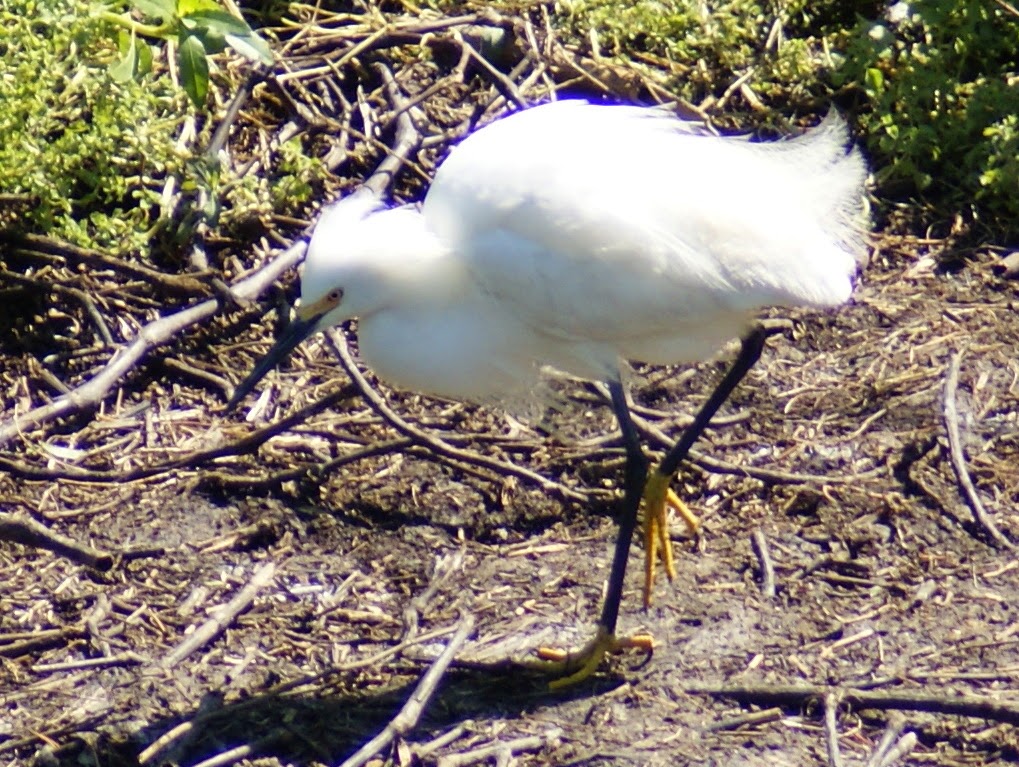When I took a very quick look at the CyFair campus nature trail on Friday afternoon, I came across two very different birds.
One was an Eastern Wood-Pewee. This delightful little bird is a flycatcher that visits the campus every year during spring migration. I have seen at least one every day for the past two weeks.
Like other flycatchers, it perches on a branch and then hurls itself up into the air to chase passing bugs. Once it has caught a bug, it often returns to the same perch.
The other bird I ran across was a female Great-tailed Grackle. Great-tailed Grackles are one of the most common birds on the campus, where most of them seem to spend their time hanging out and looking for scraps in the parking lots. Although they do not have the same beautiful glossy black plumage as their male counterparts, the females are still impressive birds.
The one I encountered on Friday was eating berries among the brambles that grow by the side of the nature trail boardwalk. I tried several times to get a picture of her actually eating a berry but I was too slow.
I was a little luckier when she decided to pose among some wildflowers.
With any luck, I should see more Grosbeaks and other migrants over the next two weeks or so, since this is typically when most spring migrants appear on the campus.
.



















































